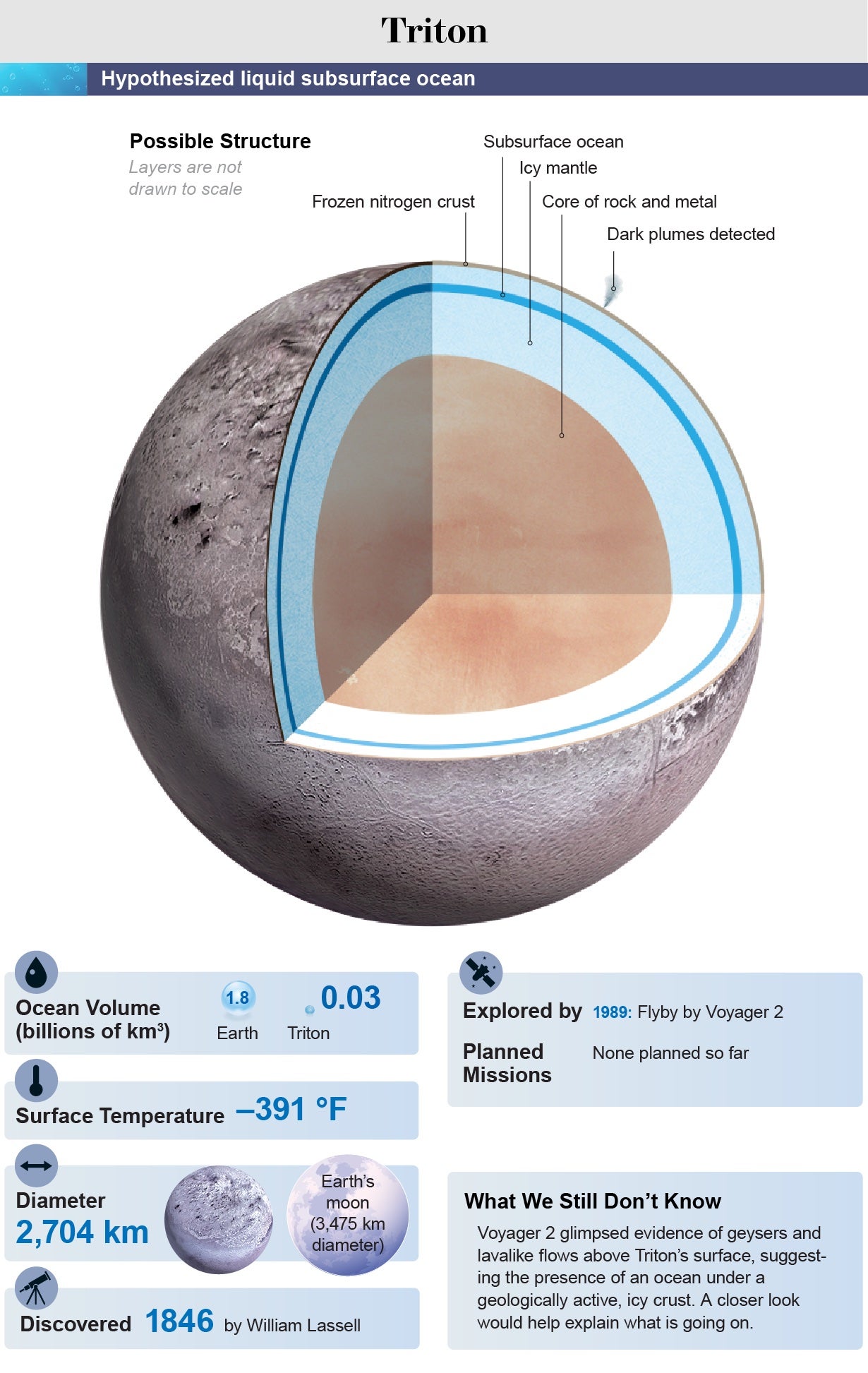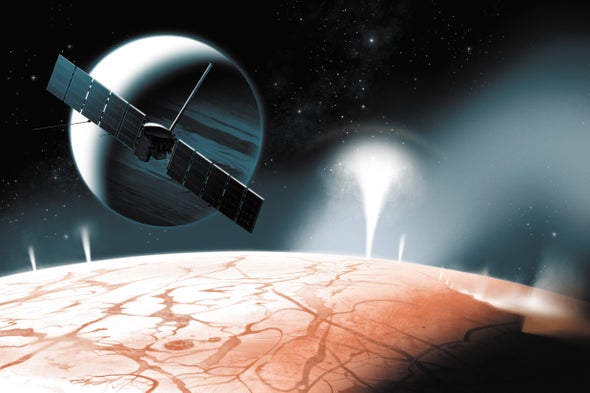In 2005 the Cassini spacecraft visiting Saturn flew through something engineers didn’t expect—a fine water mist, spraying into space at 1,290 kilometers per hour through cracks in the surface of Saturn’s tiny, ice-covered moon Enceladus. Cassini wasn’t designed to sample the water, but the discovery inspired scientists to develop new missions to the outer solar system’s icy moons. At least six of those worlds—two orbiting Saturn, three orbiting Jupiter and one by Neptune—might host watery oceans, sandwiched between a warm planetary core below and ice crust above.
On Earth, water is required for life “as we know it.” Other than the dunes of Mars, where we have searched for half a century, astrobiologists now consider the icy moons of the outer planets some of the best places to look for life in our solar system.
The European Space Agency’s Jupiter Icy Moons Explorer, nicknamed JUICE, was scheduled to launch in April toward the gas giant and its moons Europa, Callisto and Ganymede. JUICE and NASA's Europa Clipper mission to Jupiter and Europa, set to launch in 2024, will change our understanding of the outer solar system. The icy moons may rewrite our cosmic perspective, just as they did when astronomers discovered them in the 17th century.
“The outer solar system is probably replete with moons that could have liquid water oceans on them, and a subset could have geothermal and water-rock interactions on the bottom,” says Chris German, an oceanographer at the Woods Hole Oceanographic Institution, who is co-leading a NASA-funded initiative called Network for Ocean Worlds (NOW). Why do those characteristics matter? “Everywhere that has those on our planet gets colonized by microbial life,” German says.
Life could flourish in half-frozen slush on Europa and Enceladus, within the subsurface saltwater ocean of Ganymede, underneath the methane and ethane rivers of Titan, and maybe in brines in the deepest craters of the dwarf planets Ceres and Pluto. The icy shells of the ocean worlds may even contain pores filled with liquid water—and perhaps microbes, says Mike Malaska, an astrobiologist at NASA's Jet Propulsion Laboratory.
About two and a half kilometers into Greenland’s ice sheet, pressure conditions mimic the top of the ice layer on moons like Europa, and microbe concentrations there are comparable to those in a spoonful of yogurt. Chemical interactions or geologic activity could provide energy for these life-forms, much as deep-sea volcanic vents like those German has discovered provide energy for extremophiles on Earth. “Pick your scenario for the origin of life on Earth, and it could have happened on Europa,” says Steve Vance, an astrobiologist at JPL. Investigators might readily find organisms by using techniques for studying extreme life on our own planet.
NOW is led by scientists at Woods Hole, the Southwest Research Institute, the Desert Research Institute and Stanford University. It will host its first joint retreat in August, aiming to bring together astrobiologists and oceanographers in the search for biological beings. Co-leader Alison Murray, a microbial ecologist at the Desert Research Institute, first considered life on alien moons while studying a frozen hypersaline Antarctic lake called Lake Vida. She says that having experience in Earth’s watery environments is essential to understanding those across the solar system. “We are actually going to go to places where we think life might be existing today,” Murray says. “Did life evolve there? Did life go there?” To find out, we just need to take a deeper dive.
Moons of Jupiter
The Galileo spacecraft discovered that Europa might be venting thin plumes of water 160 kilometers into space. It also found that Jupiter’s magnetic fields induced a current, indicating salty liquid water was present within the sphere. Europa is the solar system’s smoothest object, suggesting its surface is remade by interior processes more frequently than most other worlds besides Earth.
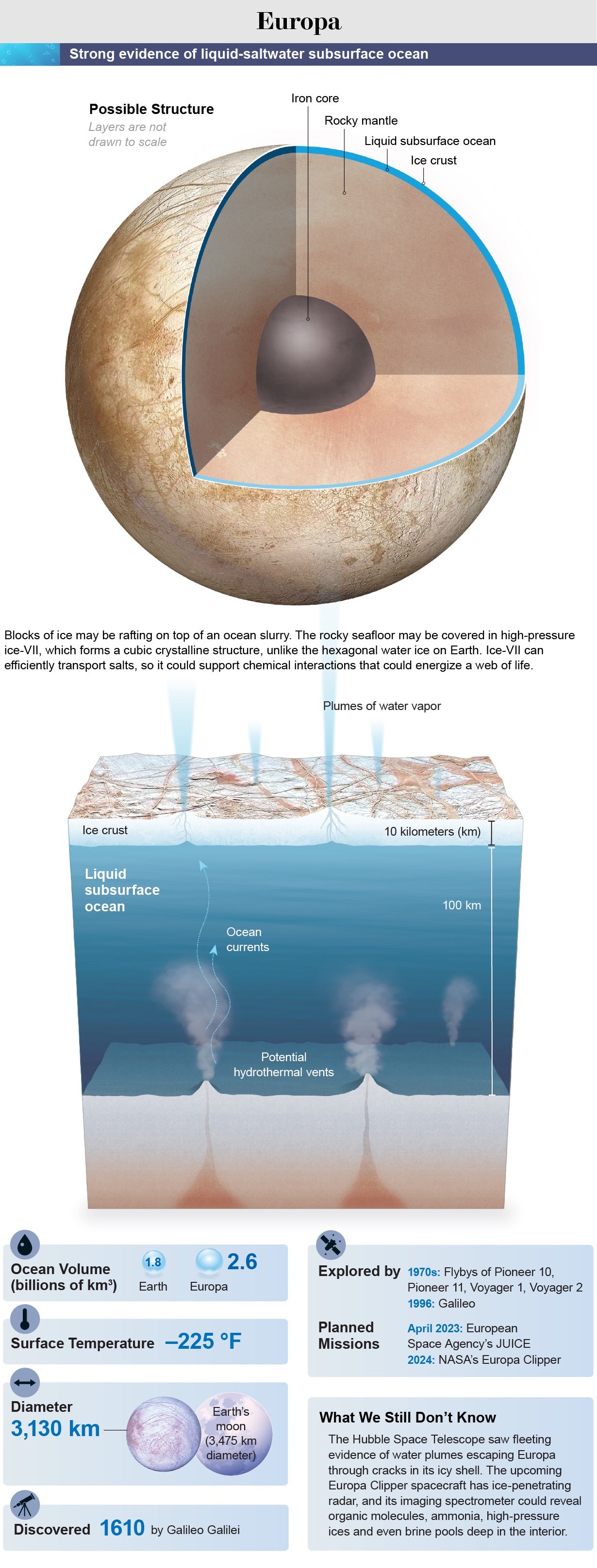
The largest moon in our solar system might contain several layers of rock, water and exotic high-pressure ices. Interactions between rock and water are fundamental to microbial diversity on Earth. Ganymede is the only known moon with its own magnetic field, which causes auroras akin to those on Earth. The auroras sway when Jupiter’s magnetic field fluctuates, partial evidence for a large saltwater ocean.
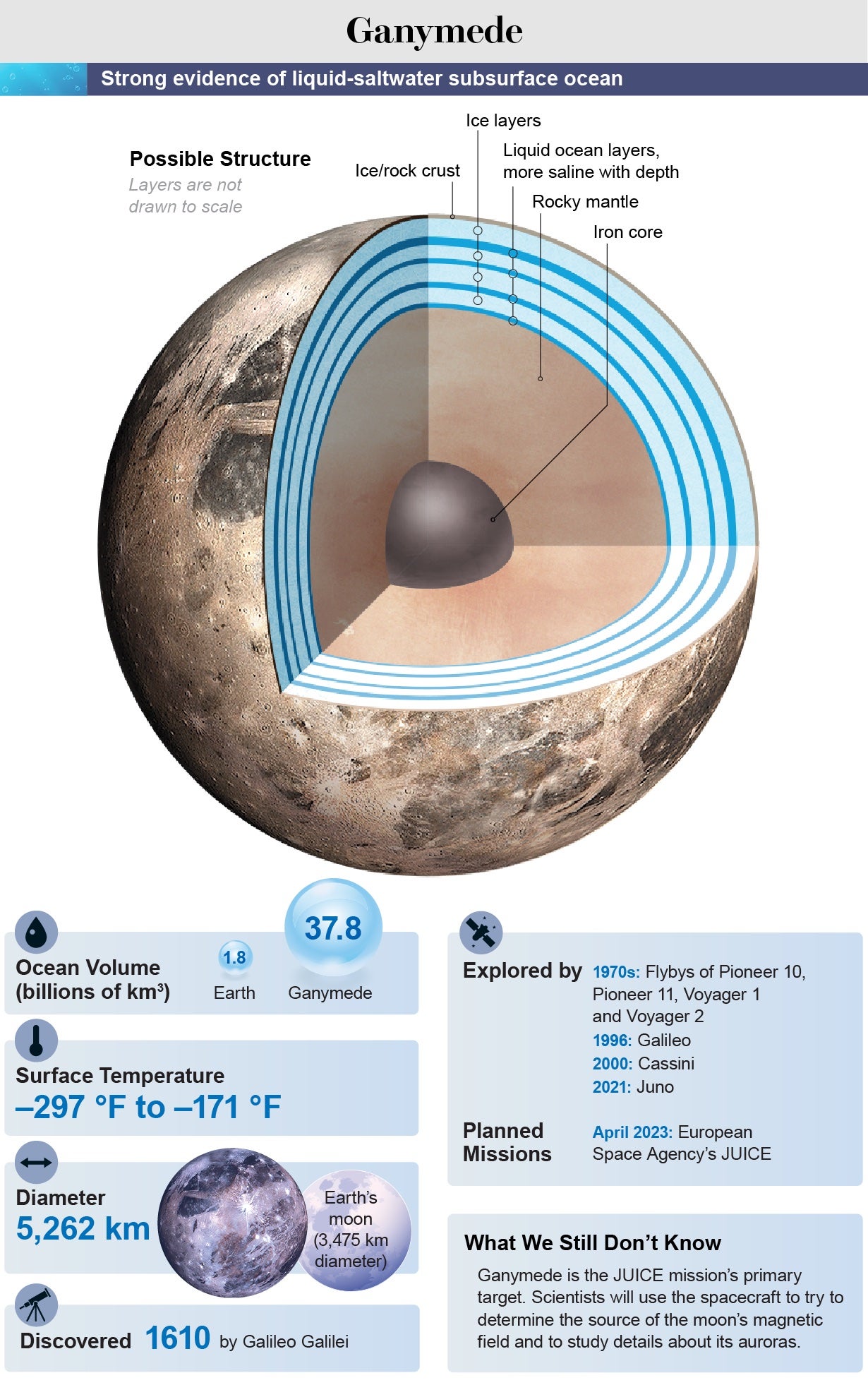
Callisto is the least dense of Jupiter’s moons. It has the good fortune of orbiting 1.8 million kilometers from the planet, beyond Jupiter’s intense radiation belts. Because Jupiter’s gravitational field is weaker at this distance, Callisto also experiences less tidal friction than its companion moons. The moon’s heavily cratered surface suggests it has not been geologically active since its formation, so it might preserve a record of the primordial solar system.
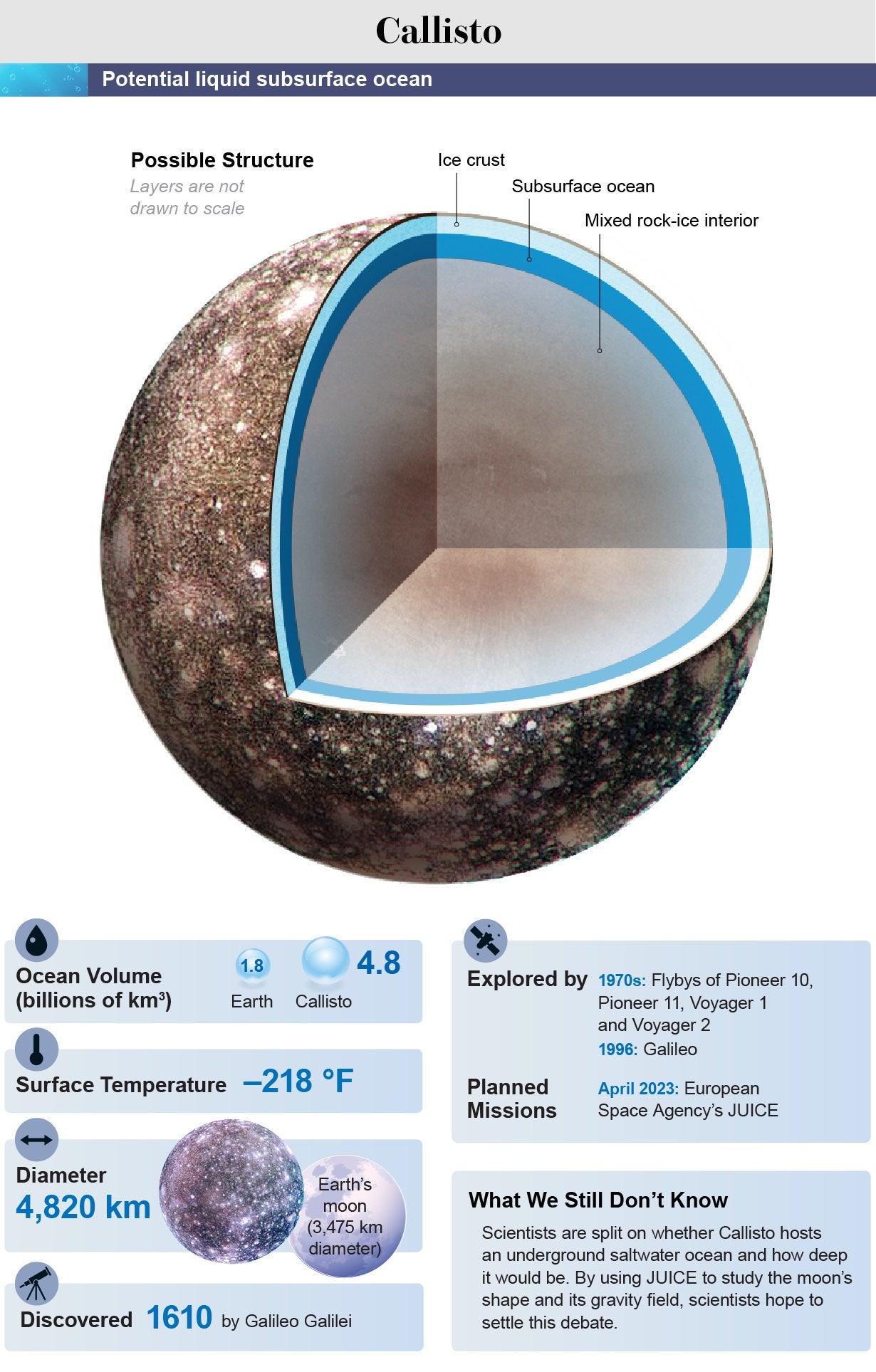
Moons of Saturn
Tiny Enceladus is the most reflective object in the solar system. Plumes of mist emanating from the outer shell freeze and fall back to the surface, keeping it snowy white. It is smooth like Europa, further evidence that it is geologically active today. Because the mist generates Saturn’s second-outermost band—the E ring—sampling the band is a way to sample Enceladus’s putative ocean and to search for organic molecules, amino acids or other ingredients for life.
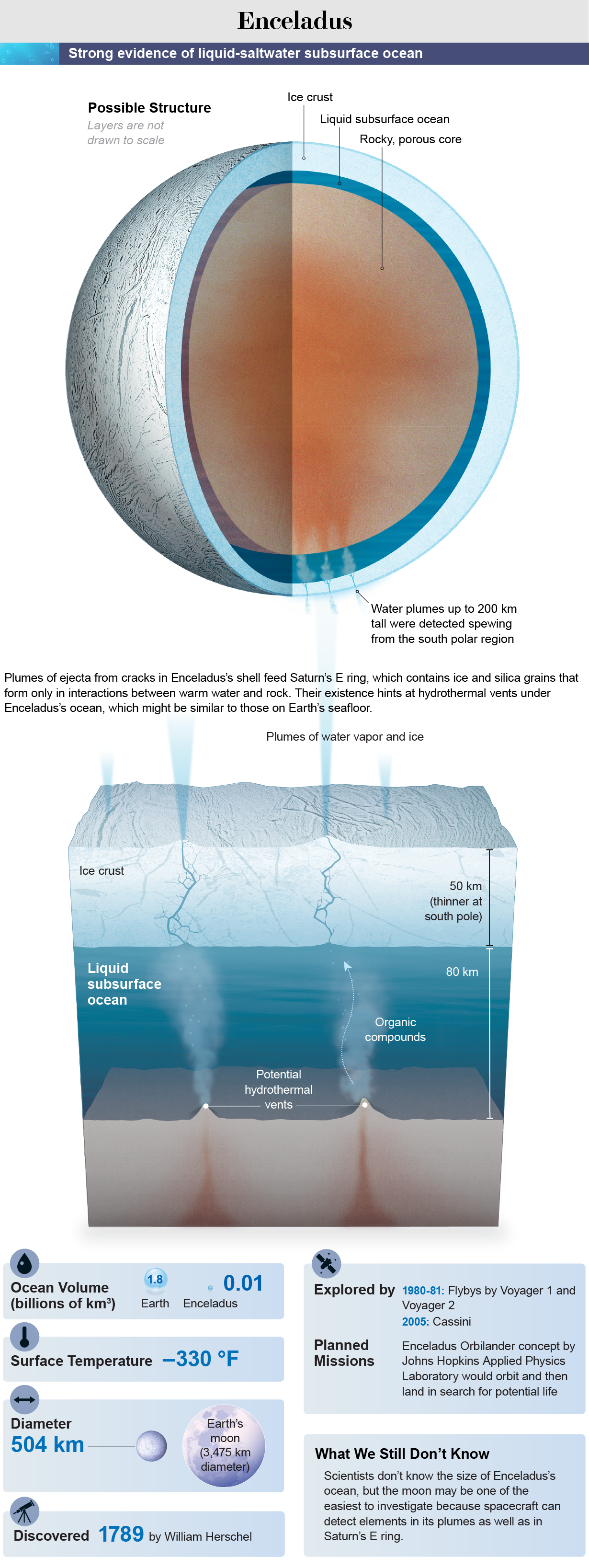
Cassini dropped a lander on Titan, the alien world most like Earth, with vast plains and canyonlands. It settled on a plain made of ice grains and found evidence for great hydrocarbon lakes. Titan’s dense atmosphere is mostly nitrogen, like Earth’s, but lacks oxygen. It has abundant liquid methane and ethane, which create the moon’s hazy orange cast. The compounds have a circulation cycle like water does on Earth that could support methane-based life.
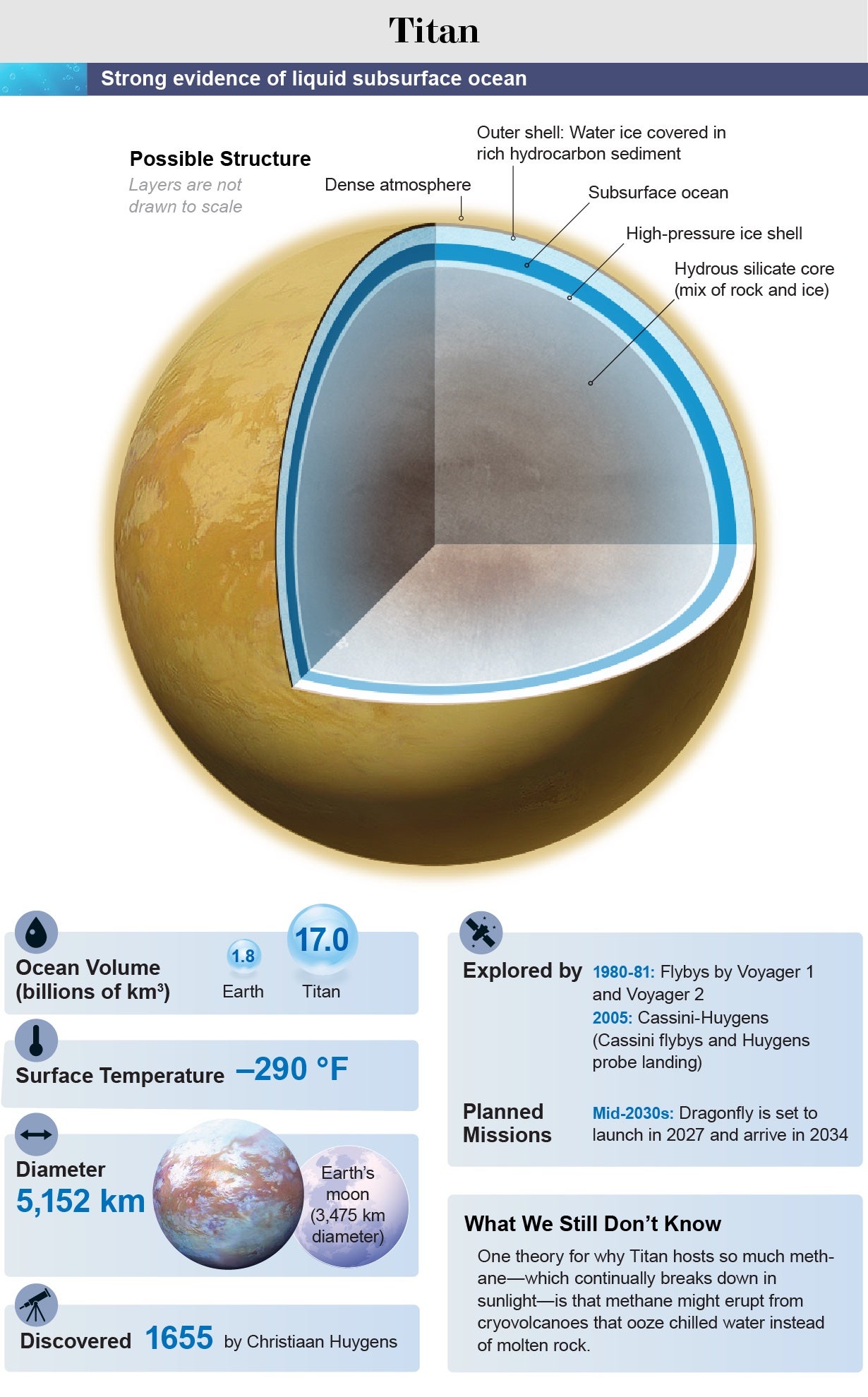
Moon of Neptune
The largest Neptunian moon orbits in a retrograde motion and was most likely captured from the icy Kuiper belt, a distant asteroid ring. The wrenching change in the moon’s trajectory probably heated it up, perhaps enough to warm a global ocean below the crust. Seasonal heating from the sun also warms the moon ever so slightly, even at 4.5 billion kilometers.
